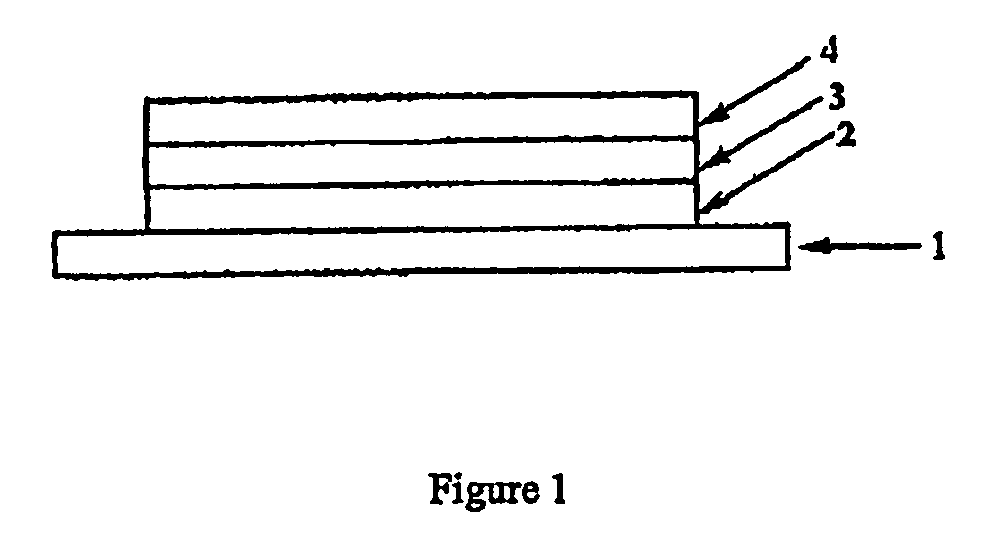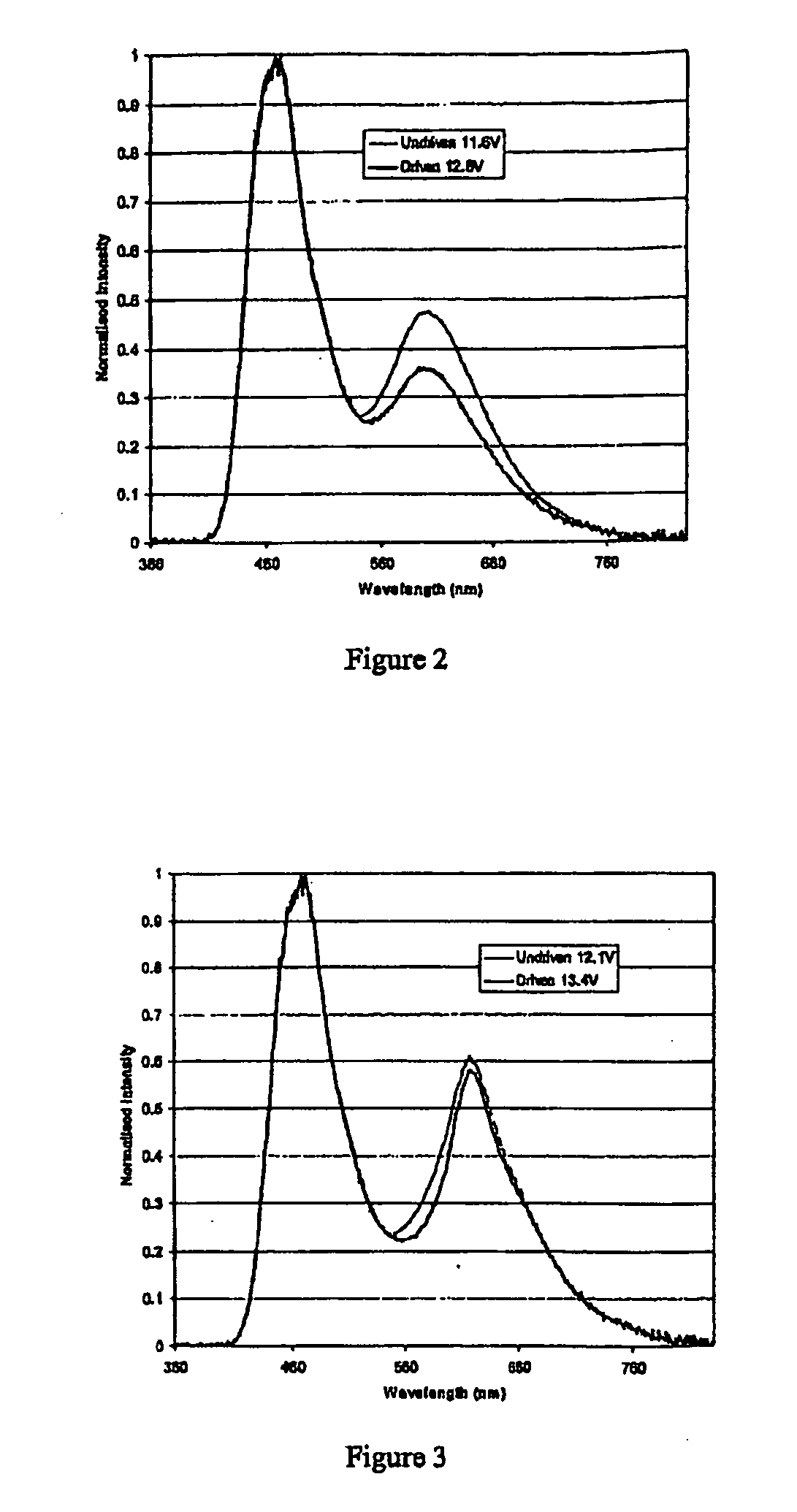Light Emissive Device
a light emissive device and light emissive technology, applied in the direction of discharge tube luminescnet screen, discharge tube/lamp details, luminescent composition, etc., can solve the problem that the application is not aware of the successful fabrication of such oleds for practical use, and achieves the reduction or elimination of quenching problems, good colour stability, and high triplet energy
- Summary
- Abstract
- Description
- Claims
- Application Information
AI Technical Summary
Benefits of technology
Problems solved by technology
Method used
Image
Examples
examples
[0075]A white emitting polymer comprising fluorescent blue emitting triarylamine repeat units of formula 4 and fluorescent red emitting repeat units of formula 8 was prepared by Suzuki polymerisation as described in WO 00 / 53656.
[0076]A red phosphorescent dendrimer material comprising tris-(phenylisoquinoline)iridium (III) was prepared as described in WO 02 / 066552.
[0077]Poly(ethylene dioxythiophene) / poly(styrene sulfonate) (PEDT / PSS), available from H C Starck of Leverkusen, Germany as Baytron P® was deposited over an indium tin oxide anode supported on a glass substrate (available from Applied Films, Colo., USA) by spin coating. A hole transporting layer was deposited over the PEDT / PSS layer by spin coating from xylene solution to a thickness of about 10 nm and heated at 180° C. for 1 hour. A blend of the aforementioned fluorescent polymer and phosphorescent dendrimer was deposited over the layer of F8-TFB by spin-coating from xylene solution to a thickness of around 65 nm. A Ba / Al ...
PUM
| Property | Measurement | Unit |
|---|---|---|
| wavelength | aaaaa | aaaaa |
| wavelength | aaaaa | aaaaa |
| wavelength | aaaaa | aaaaa |
Abstract
Description
Claims
Application Information
 Login to View More
Login to View More - R&D
- Intellectual Property
- Life Sciences
- Materials
- Tech Scout
- Unparalleled Data Quality
- Higher Quality Content
- 60% Fewer Hallucinations
Browse by: Latest US Patents, China's latest patents, Technical Efficacy Thesaurus, Application Domain, Technology Topic, Popular Technical Reports.
© 2025 PatSnap. All rights reserved.Legal|Privacy policy|Modern Slavery Act Transparency Statement|Sitemap|About US| Contact US: help@patsnap.com



